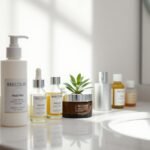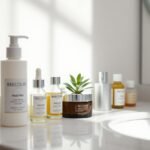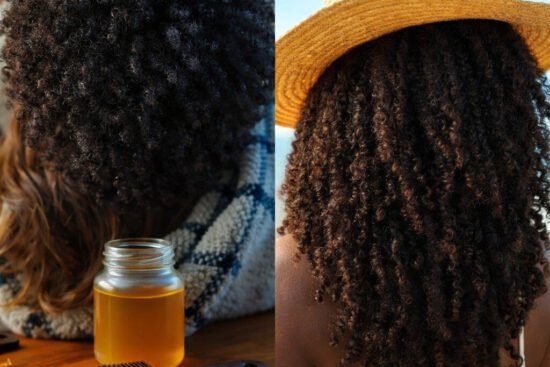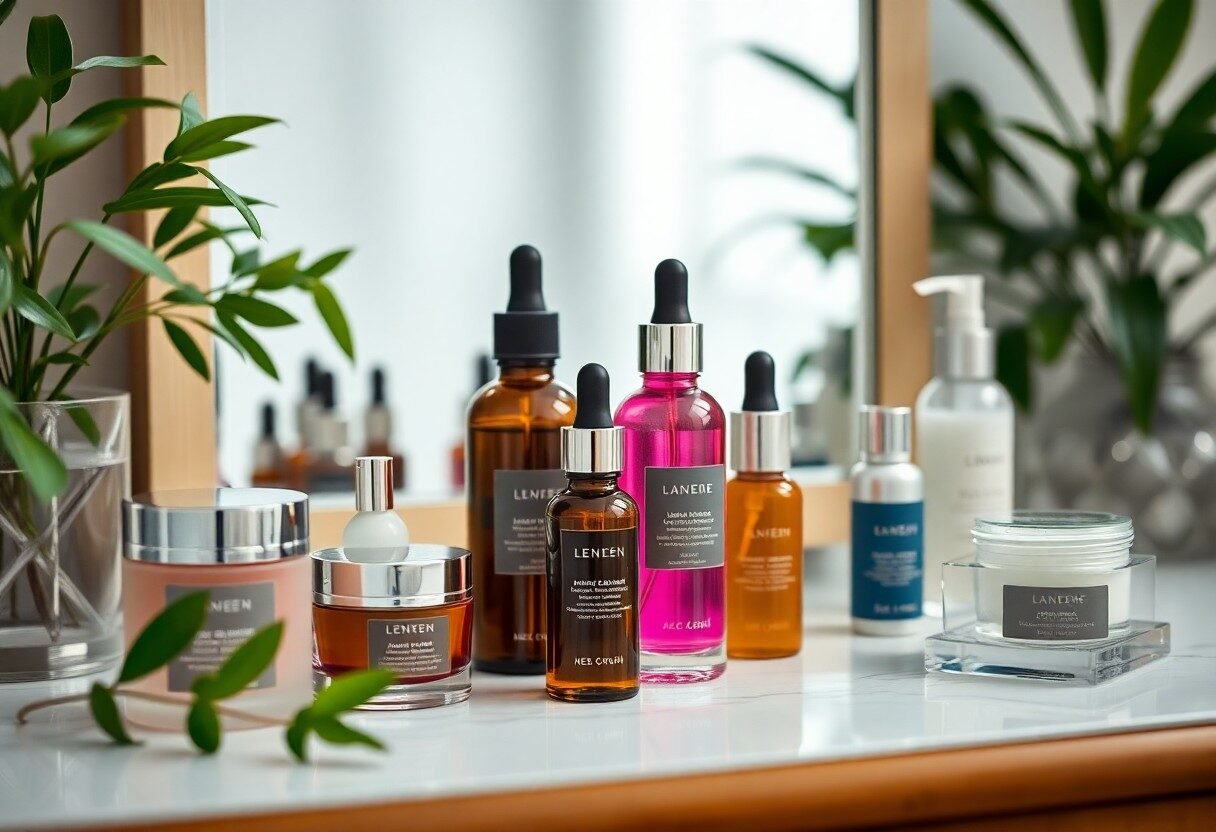
Most of us desire healthy, radiant skin, and the right combination of serums and treatments can make a significant difference in achieving that goal. In this post, I will guide you through the imperatives of building an effective skincare regimen, emphasizing the importance of choosing the right products for your unique skin type. By understanding how to properly incorporate serums and treatments, you can maximize their benefits and avoid potential pitfalls that could arise from improper usage. Let’s explore how you can enhance your routine for optimal results.
Key Takeaways:
- Begin with a clean slate: Always cleanse your face thoroughly before applying serums or treatments to ensure maximum absorption and efficacy.
- Choose serums based on skin concerns: Identify specific issues like dryness, acne, or aging and select serums that target those concerns effectively.
- Layer products wisely: Apply products in order of consistency, starting with thinnest (like water-based serums) to thickest (like creams or oils) for better results.
- Give products time to work: Allow serums and treatments to absorb fully before layering more products; waiting a few minutes can enhance effectiveness.
- Patch test new products: Try a small amount of any new serum or treatment on your wrist or behind your ear to gauge reactions before applying to your face.
- Don’t mix incompatible ingredients: Be cautious when combining active ingredients such as retinol, vitamin C, and AHAs/BHAs to avoid irritation.
- Stay consistent: Regular use of serums and treatments is key to noticing long-term improvements in your skin’s appearance and health.
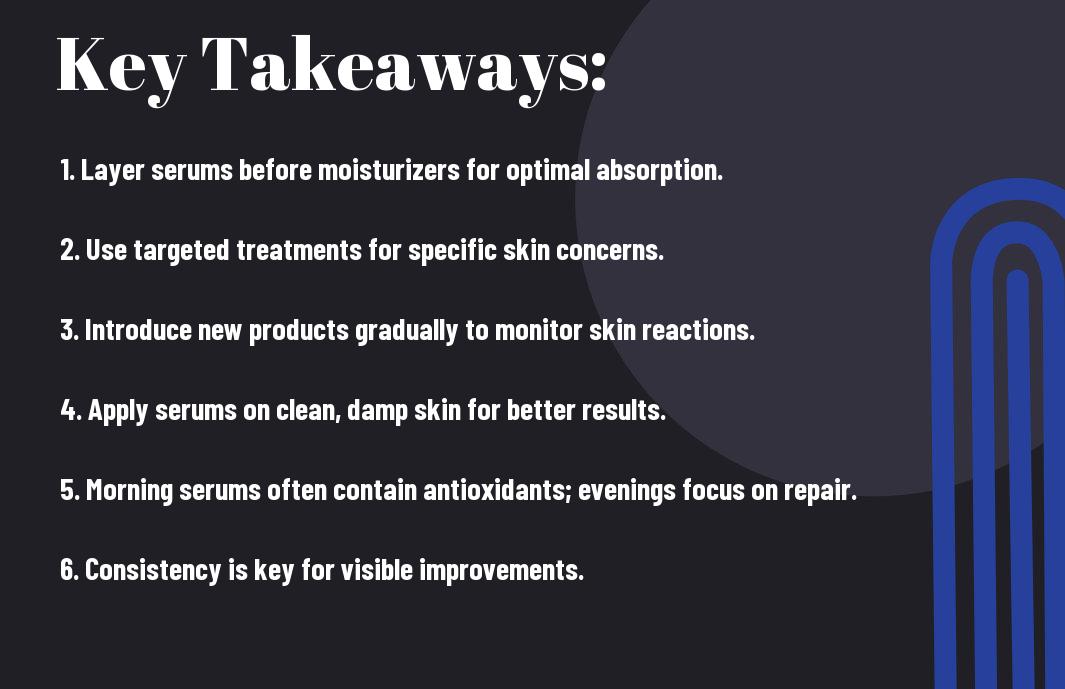
Crafting Your Ideal Skincare Regimen
Your skincare routine should be as unique as you are, tailored to fit your specific needs and lifestyle. By understanding your skin’s individual requirements, you can effectively incorporate serums and treatments that target your unique concerns. Whether you’re struggling with dryness, hyperpigmentation, or breakouts, each product plays a role in achieving that coveted glow. Let’s dive deeper into how to create a regimen that works best for you.
Identifying Skin Type and Concerns
Determining your skin type—whether it’s oily, dry, combination, or sensitive—is the first step to a successful regimen. I often suggest conducting a simple test: wash your face and leave it bare for an hour. This will allow you to observe how your skin behaves without products. Pay attention to areas of oiliness, dryness, or irritation, as they’ll guide you in selecting the right serums and treatments to address your specific needs.
Establishing Your Skincare Goals
Setting clear, defined skincare goals is important for crafting an effective regimen. Are you aiming for improved hydration, reduced blemishes, or enhanced skin tone? Putting specific targets in place allows you to choose products that align with those aspirations. For instance, if tackling dark spots is a priority, incorporating brightening serums will be beneficial, while those focused on anti-aging might lean toward retinol-based treatments.
When establishing your skincare goals, consider what you hope to achieve in both the short-term and the long-term. For example, short-term goals could involve reducing redness or irritation within a few weeks, while long-term goals may focus on attaining even skin tone or overall skin health over several months. You might think about potential milestones, like going makeup-free for a day, as a way to gauge your progress. Writing down your goals can serve as a motivating reminder of what you’re working towards as you explore and refine your regimen.
The Science of Serums: Why They Matter
Serums stand out in skincare for their ability to deliver concentrated doses of active ingredients directly to the skin. Their lightweight, fast-absorbing formulations allow for deeper penetration compared to traditional moisturizers. This characteristic makes serums exceptionally powerful in addressing various skin concerns effectively and efficiently, significantly enhancing the overall results of your skincare regimen.
Breakdown of Active Ingredients
Each serum is a cocktail of active ingredients tailored to target specific skin issues. Typical components include antioxidants like vitamin C, for brightening; hyaluronic acid, for hydration; and retinol, for anti-aging. Understanding these ingredients allows you to choose serums that match your skin’s needs, maximizing treatment efficacy.
How Serums Target Specific Skin Issues
Serums are designed to focus on particular skin issues with precision. For instance, if you’re struggling with hyperpigmentation, a serum containing niacinamide can visibly reduce dark spots and evening skin tone. Alternatively, a serum enriched with peptides can enhance collagen production, combating fine lines and wrinkles. By selecting targeted formulations, your skincare journey can become more customized, yielding faster, more satisfying results.
By closely examining your skin concerns, you can choose serums that serve as solutions. If you have acne-prone skin, serums with salicylic acid work to unclog pores and reduce inflammation. If your primary concern is aging, look for those containing retinol, which promotes cellular turnover and smooths the skin’s texture. The laser-focused efficacy of these formulations allows for noteworthy improvements with consistent use, often visible in just a few weeks.
Integrating Treatments: Timing and Technique
Successful skincare regimens hinge not just on the products selected, but also on how and when they’re applied. Timing can significantly influence the effectiveness of a treatment, as certain ingredients work better under specific conditions. For instance, I find that applying active serums at night, when your skin is in repair mode, often yields more noticeable results than daytime use. Consider your daily routine, the climate you live in, and even the time of year, as these factors can all influence your approach to integrating treatments.
The Order of Application
Mastering the order of application ensures that each product functions optimally. Start with the lightest formulations, such as toners or essences, and gradually work your way up to thicker creams and oils. For my routine, I typically apply serums first, allowing ample time for absorption, before following up with moisturizers. This layering technique creates an effective barrier for the skin while maximizing the potency of your active ingredients.
Layering Products for Maximum Effectiveness
The order of application isn’t just about getting products onto your skin; it’s about how well they interact with one another. Applying vitamin C under SPF not only protects your skin from UV rays but also amplifies its protective effects. I personally observe that pairing hyaluronic acid serums with occlusive ingredients like oils can lock in hydration, making my skin feel plump and radiant.
To fully harness the benefits of layering, consider a balancing act between water-based and oil-based products. For instance, I apply a lightweight gel serum first, rich in hyaluronic acid, followed by a nourishing oil to seal in moisture. The oil acts as a barrier that protects and enhances the serum’s efficacy over time. Additionally, I alternate active treatments throughout the week, such as retinol one night and a brightening serum the next, avoiding potential irritation while still targeting multiple skin concerns effectively. This approach not only delivers results but also keeps my skin healthy and resilient against environmental stressors.
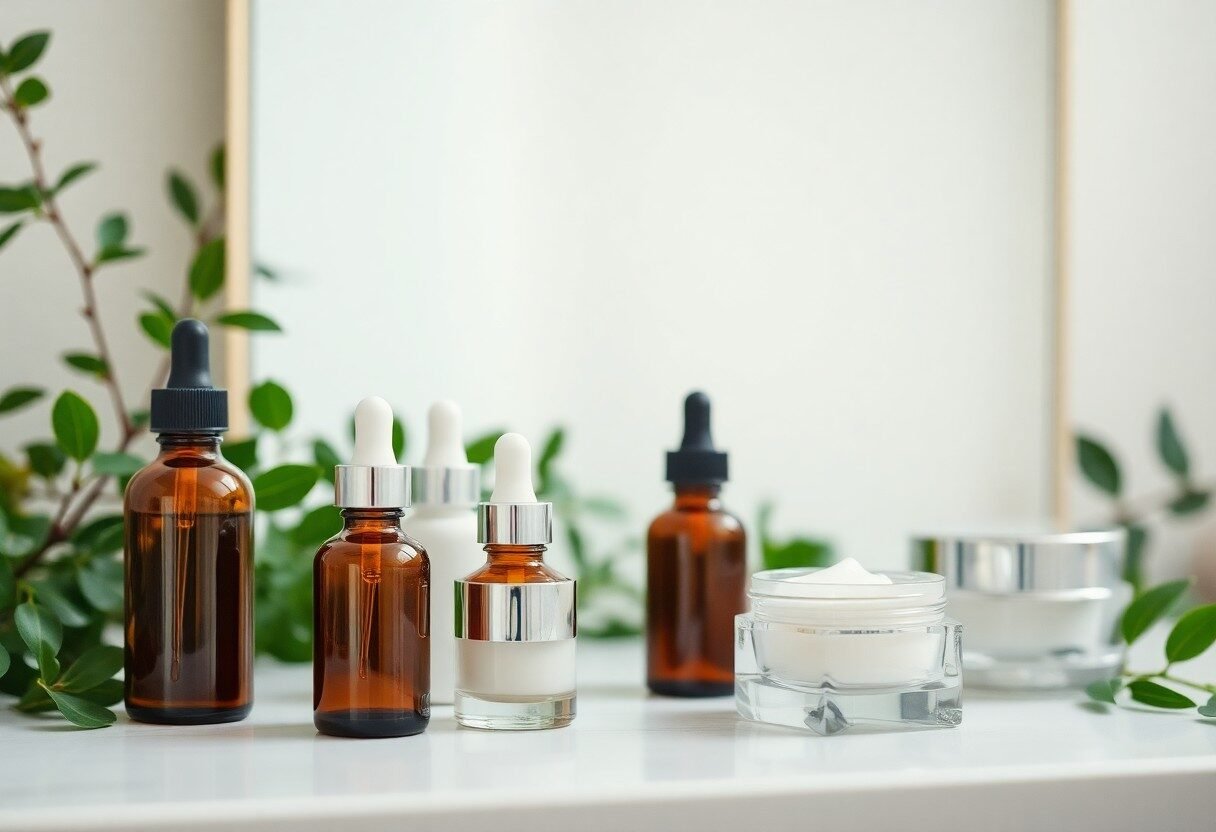
Customizing Your Routine: Personalization Strategies
Personalizing your skincare regimen is key to achieving optimal results tailored to your unique skin needs. Begin by taking into account your skin type, sensitivities, and specific concerns such as hyperpigmentation or fine lines. I prefer to keep a skincare journal to monitor how my skin reacts to different products over time, allowing me to make informed adjustments. Finding the right balance of active ingredients and textures is necessary, so don’t hesitate to experiment with various serums to discover your perfect combination.
Adjusting Frequency Based on Skin Response
Fine-tuning how often you apply treatments can significantly affect their efficacy. If you’re introducing a new serum, I suggest starting with a few times a week, then increasing frequency based on how your skin reacts. For example, if a serum with retinol causes dryness or irritation, you might adjust to every other night or even less frequently. Pay close attention to your skin’s feedback, and don’t hesitate to modify your routine if you notice any discomfort.
Mixing and Matching for Optimal Results
Creating an effective regimen often involves experimenting with different products to find what works best for you. This means not being afraid to mix and match serums and treatments that address your various skin concerns. For instance, I might pair a brightening vitamin C serum during the day with a hydrating hyaluronic acid serum at night to combat dullness while keeping my skin appropriately moisturized. Always introduce one product at a time to minimize the risk of irritation and clearly identify which product is causing a reaction.
In fact, evidence suggests that certain ingredients can work synergistically to boost overall results. Pairing niacinamide with hyaluronic acid enhances hydration and can improve skin tone, while combining salicylic acid with a gentle AHA can clear pores while promoting cell turnover. By understanding the roles of each ingredient and their compatibility, you can create a dynamic skincare routine that targets multiple issues effectively, offering a comprehensive approach to maintaining a healthy and radiant complexion.
Navigating Common Pitfalls: What to Avoid
Avoiding common pitfalls can save you time, money, and frustration in your skincare journey. Many individuals unknowingly derail their routines through mistakes that can lead to irritation or ineffective results. By steering clear of these traps, you can optimize your regimen for your skin’s needs and achieve better outcomes.
Overloading Your Skin with Products
Using too many products in your skincare routine can overwhelm your skin, leading to irritation, breakouts, or other issues. Focusing on a few key serums and treatments allows your skin to adapt and benefit from the active ingredients without causing stress. I often recommend limiting your routine to about three to four core products to strike the right balance.
Misunderstanding Product Interactions
Understanding how different skincare products interact with one another is crucial for a successful regimen. For instance, layering vitamin C with retinol can lead to increased irritation since both are potent ingredients. It’s beneficial to separate the application of these items by using one in the morning and the other at night. Also, knowing how to introduce new products gradually allows your skin to acclimate and helps you identify any adverse reactions clearly.
Summing up
Taking this into account, integrating serums and treatments into your skincare regimen can significantly enhance your overall skin health. I recommend assessing your skin’s specific needs and selecting products that address those concerns effectively. By layering these potent formulas with your existing routine, you can achieve a more radiant and youthful complexion. Always pay attention to how your skin reacts, and don’t hesitate to adapt your approach as needed. Ultimately, a well-structured regimen tailored to your unique needs will lead to the best results for your skin.
FAQ
Q: What is a skincare regimen and why is it important?
A: A skincare regimen is a systematic routine designed to keep your skin healthy and address specific concerns. It typically includes cleansing, exfoliating, moisturizing, and protecting the skin. Establishing a routine is important as it helps maintain skin balance, prevent issues such as acne or dryness, and enhances overall skin appearance.
Q: How do I choose the right serums for my skin type?
A: Identifying your skin type is the first step in selecting the right serums. For example, if you have oily skin, consider serums with salicylic acid or niacinamide to help control excess oil. For dry skin, look for hydrating ingredients like hyaluronic acid or glycerin. If you have sensitive skin, choose serums that are fragrance-free and contain calming ingredients such as aloe vera or chamomile.
Q: When is the best time to apply serums in my skincare routine?
A: Serums should be applied after cleansing and toning but before moisturizing. This allows the active ingredients to penetrate the skin effectively. Ideally, you would apply them both in your morning and evening routines, with some serums specifically tailored for use at certain times, such as those with antioxidants in the morning for protection against environmental damage.
Q: Can I layer multiple serums in my routine?
A: Yes, layering multiple serums can be beneficial, but it’s important to apply them in the correct order. Generally, you should apply the thinnest texture to the thickest, starting with water-based serums before moving on to oil-based ones. Make sure to allow each layer to absorb before applying the next to maximize the effectiveness of your routine.
Q: How do I incorporate treatments like retinol or acid peels into my regimen?
A: Treatments such as retinol or chemical exfoliants should be introduced gradually into your skincare regimen. Start by using them once or twice a week and gradually increase frequency as your skin builds tolerance. Always apply these treatments after cleansing and before other serums or moisturizers. It’s crucial to use sunscreen during the day when using these products, as they can increase sensitivity to the sun.
Q: Are there any products I should avoid mixing together in my routine?
A: Certain ingredients can react negatively with one another. For example, avoid using retinol in conjunction with vitamin C simultaneously, as this may cause irritation. Additionally, mixing strong exfoliants, like AHAs or BHAs, with retinoids can lead to overwashing. It’s advisable to use these products at different times, such as alternating them on separate days.
Q: How often should I update my skincare regimen?
A: It’s beneficial to assess your skincare regimen every few months or with changes in seasons. Your skin’s needs can change based on environmental factors, lifestyle, or hormonal fluctuations. If you notice any new concerns or if your products are no longer effective, consider consulting a skincare professional for personalized advice and recommendations.



